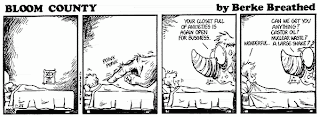First Century Stones
 |
| First-century Synagogue, Magdala, Israel |
We began early this morning in Chorazim, which was one of the cities Jesus cursed because of their unbelief (Luke 10:13). We got to experience a huge mansion (or at least the ruins), a insula, also known as a "father's house." It had many rooms, mostly for sleeping, and a large courtyard where the extended family would gather. That image is how Jesus described the kingdom: "In my father's house there are many rooms" (John 14:2). We also saw a typical house in the city, a home with a very small window and built from black basalt rock (native to the area). It would make for a very dark house, which is why in Jesus' parable the woman has to light a lamp to look for the lost coin (Luke 15:8-10). Chorazim is a city that has not been rebuilt; Jesus' curse remains.
After quite a drive, we arrived at the territory of Dan, one of the twelve tribes of Israel, where we got to see one of the three sources of the Jordan River (the second largest). Dan is lush, beautiful, green—not what most people expect when they come to Israel. We took a long hike, walking to the pagan worship center (built at Dan to keep people from going to Jerusalem to worship when the northern tribes broke away from the southern tribes), a gate dating to the time of Abraham, and a gate dating to David's time. The territory is vast, and it sits on the border of modern-day Lebanon. We could see Lebanon from a high point in the park.
Near Dan is Caesarea Philippi (the largest source of water for the Jordan River). I always describe this place as a "shopping mall for gods." It was a center for pagan worship in the first century, with one temple next to another, and because of that it was also the place where Jesus took the disciples to ask them who they though he was. In front of this place, this grotto that is known as "the gates of hell," Jesus told them that those same gates will never prevail against his kingdom. Caesarea Philippi is in ruins, while the kingdom of God continues to advance. Jesus' word is true.
Lunch was in the Golan Heights, which is an "occupied territory," captured (along with the West Bank) from Syria in 1967. For fifty years, the ownership of this part of the country has been disputed, and while I don't understand the politics of the situation, our guide surmised that with the current problems in Syria, the matter is not likely to be resolved anytime soon. We had falafel and chicken schnitzel for lunch, sitting on a patio that overlooked a small, beautiful lake. What a tasty and wonderful respite.
After a brief stop along the Syrian border (above a United Nations camp), we came back to the Sea of Galilee and visited Magdala, which is a new place for me as the site has only been open just a few years. Magdala was the home of Mary Magdalene, of course, and the city today hosts the only known first-century synagogue that has been uncovered. There is a very good chance Jesus might have been in this synagogue, but he was at least in this town. We also visited the "wealthy side" of town, where indoor plumbing was a thing, as was a sewer system running underneath the city. We've got nothing on the engineers of the first century! It's amazing to touch these first-century stones and know that Jesus may have touched these same stones two thousand years ago. Magdala is an archaeological work in progress and I look forward to coming back here to see what else they will uncover.
Our adventure continued with a hike to the top of Mt. Arbel, and a beautiful panoramic view of the Galilee from the top. The view from Arbel, which towers over Magdala, is so worth the walk. I always think of Jesus giving the Great Commission (Matthew 28:16-20) when I'm up here, because you can see so far into the distance, and I can almost picture Jesus pointing off in various directions as he tells the disciples to go to the ends of the earth. And remember, he promises to be with them, and us.
As we headed back to the hotel, we stopped at a diamond factory. Israel's second-largest industry is diamond exporting (it used to be the biggest industry until high-tech took over). They bring diamonds here from all around the world, shape them and send them out. Of course, the tour came with a sales pitch, but I won't say who did or did not purchase anything from the sales floor!
Now, we rest and gear up for another busy day tomorrow. Pictures will follow on Facebook as the internet allows!


Sounds like it was a great day, especially Magdala.
ReplyDelete